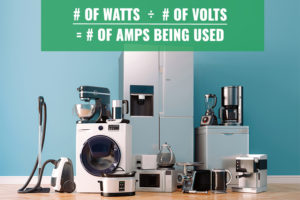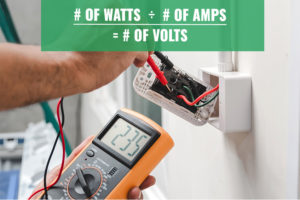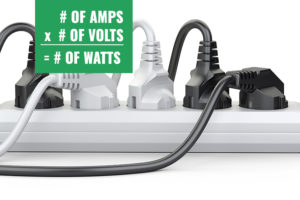AMPS, WATTS, AND VOLTS: A GUIDE TO MEASURING POWER
Amps, Watts, and Volts are fundamental concepts in understanding electrical systems. Amperes (amps) measure the flow of electric charge, volts measure the potential difference driving the current, and watts measure the rate of energy transfer. Knowing how to measure and calculate these can help prevent electrical issues and optimize the power usage in your home or business. This guide breaks down these concepts, explains how to calculate them, and provides tips for managing your electrical load.
Understanding the intricacies of electrical measurements is crucial for managing your home or business’s power needs. Frequent power outages might indicate you’re overloading your circuit breaker. This guide will help you understand amps, watts, and volts, so you can better manage your electrical load.
DEFINING ELECTRICAL TERMS
Before diving into calculations, let’s define the key terms in electrical measurements:
- Amps (Amperes): The unit of electrical current, representing the flow of electric charge.
- Volts (Voltage): The unit of electromotive force, representing the potential difference that drives electric current.
- Watts (Power): The unit of power, representing the rate of energy transfer equivalent to one joule per second.
Think of electricity like water flow:
- Amps are the volume of water flowing.
- Volts are the pressure of the water.
- Watts measure the force produced by the flow.
CALCULATING POWER MEASUREMENTS
AMP RATING
Your circuit breaker has a specific amperage rating, which determines the volume of electricity it can handle. Exceeding this limit will trip the breaker to prevent damage.
How to Find Your Home’s Amperage:
- Check your circuit breaker’s handle. Most household circuits are rated for 15-20 amps. For more information on checking your circuit breaker, visit our Circuit Breaker Guide.
How to Determine Your Device’s Amperage Usage:
- Check your device’s label or manual for watts and volts.
- Use the formula: Amps = Watts / Volts.
- Keep track of each device’s amperage to avoid overloading the circuit. Learn more about this in our Home Electrical Safety Tips.
OUTLET VOLTAGE
Voltage measures the power available from your outlets, typically up to 120 volts in standard outlets.
Types of Voltage Currents:
- Direct Current (DC): Flows in one direction, used by most digital electronics.
- Alternating Current (AC): Periodically changes direction, used in household wiring. To understand the differences between AC and DC, check our AC vs. DC Power.
Calculating Outlet Voltage:
- Know your circuit’s amperage.
- Check the device’s wattage.
- Use the formula: Volts = Watts / Amps
WATT MEASUREMENTS
Watts measure the power usage of devices. Knowing the wattage helps in managing electrical load efficiently.
Calculating Circuit Wattage Capacity:
- Multiply the circuit’s amperage by the outlet’s voltage: Watts = Amps x Volts.
- Ensure your total wattage does not exceed this capacity to prevent blowouts.
CONTACT JP ELECTRICAL FOR SUPPORT
If you experience tripped circuit breakers or other electrical issues, contact JP Electrical. Our experts can handle all your electrical needs, from wiring and lighting to installing generators. Prevent electrical problems before they occur with our professional services.
Explore Our Services:
Categories: Electrical Maintenance



